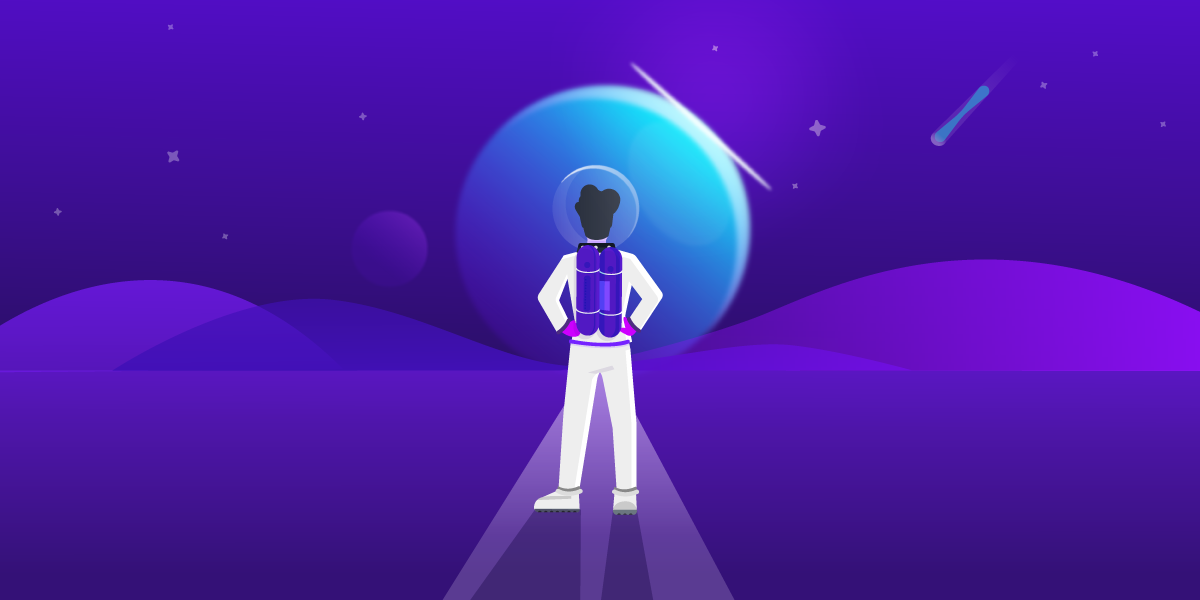We’re big on music at Spaceship.
And we invest in Spotify in the Spaceship Universe portfolio.
Sometimes the Spotify playlists feel like magic – like it knows your taste in music better than you do.
So just how does it know what to add to your queue?
What’s your Spotify taste profile?
Each Spotify user has a taste profile. Your taste profile is made up of all the data that Spotify has about you and the way you behave when you use the Spotify app or website.
Spotify creates your profile from data points like:
- The songs you listen to most
- The artists you listen to most
- What you skip
- What you ‘like’
- What you ‘dislike’
- The playlists you create
Spotify also lets you stop specific music from influencing your taste profile – so you won’t be in danger of a sleep hypnosis track shuffling onto your workout mix.
Then, Spotify uses your taste profile to recommend you content it thinks you’ll like.
How does Spotify know what songs you’ll like?
Spotify uses machine learning to figure out the songs you’ll like. It feeds the data through a series of algorithms that then make recommendations.
How does the Spotify algorithm work?
There are a few different parts to Spotify's secret sauce – its algorithm. Lots of it is under wraps, but here’s what’s publicly available.
Collaborative Filtering:
In simplest terms, Spotify looks at users who fit the same profile as you, sees what they’re listening to, and suggests it to you.
Each user, song, artist is represented as a low-dimensional vector called an ‘embedding’.
“You can think about this as fingerprints for everything we have,” said Spotify’s VP of Personalisation Oskar Skal. “Artists, tracks, listeners, playlists—anything you can imagine has a fingerprint in this embedding space.”
Once Spotify maps all the embeddings, it can see where the clusters are, and what the patterns are that might have led to them. Then it can use algorithms to make playlists based on that information.
For example, if you’ve been a Swiftie since day one, you’ll likely be mapped with other die-hards and be suggested similar music to one another.
Natural Language Processing:
Spotify analyses different music features such as lyrics and song titles to work out which songs might be similar, to suggest them to you. (So if you’ve got a sad song habit, it’s going to enable you to continue to be in your feelings.)
Audio Analysis:
Spotify compares songs based on how similar and different they are, including whether they’re fast, slow, heavy, soft, instrumental, or vocal. This helps it recommend you songs that have similar audio features as those you already listen to.
But, why ML models?
Machine learning is a type of artificial intelligence that lets companies make the most of their data, and attract, retain, and monetise their users.
So just why is this such an important thing for companies to nail? We asked Sid Mehta from the Spaceship Voyager Investment Team. Over to Sid:
“Personalisation is critical to the user experience. When Facebook introduced their home page, they received a lot of backlash from customers who felt that it was an invasion of their privacy to broadcast information. But Mark Zuckerberg stuck to his conviction and it paid off. The home page drove engagement in the platform. Over time, Facebook personalised the content based on customer patterns, and this helped increase Facebook’s relevance to their customers.
The big winners in technology have been companies that have invested in personalisation for their users. Facebook personalised social media content, Google personalised search of information, YouTube personalised streaming. The more recent winners this past decade have been companies like TikTok, that have built a highly addictive and sticky platform through personalisation. In last year’s Recode conference, Snap’s CEO Evan Spiegel was asked about how he views competition with TikTok. He admitted that TikTok’s algorithm learns user behaviour over time, better than most social media platforms. The content gets more relevant as users spend more time on the platform. That is the power of personalisation.
Tech journalist Kara Swisher interviews Snap CEO Evan Spiegel.
In a similar way, Spotify has personalised music. Spotify’s early adopters preferred the platform because Spotify helped them discover artists through playlists. As a user, you may notice that Spotify still recommends highly relevant playlists according to their user’s searching preferences, and they are now doing the same in podcasts, to further drive engagement and retention. This is one of the reasons why, by the second quarter of 2022, Spotify had over 30% market share of music subscribers worldwide, ahead of competitors such as Apple, Amazon, YouTube."
Some of the Spaceship Voyager portfolios invest in Spotify, Facebook, Google, and Snap at the time of writing.
Important! We’re sharing with you our thoughts on the companies in which Spaceship Voyager invests for your informational purposes only. We think it’s important (and interesting!) to let you know what’s happening with Spaceship Voyager’s investments. However, we are not making recommendations to buy or sell holdings in a specific company. Past performance isn’t a reliable indicator or guarantee of future performance.



